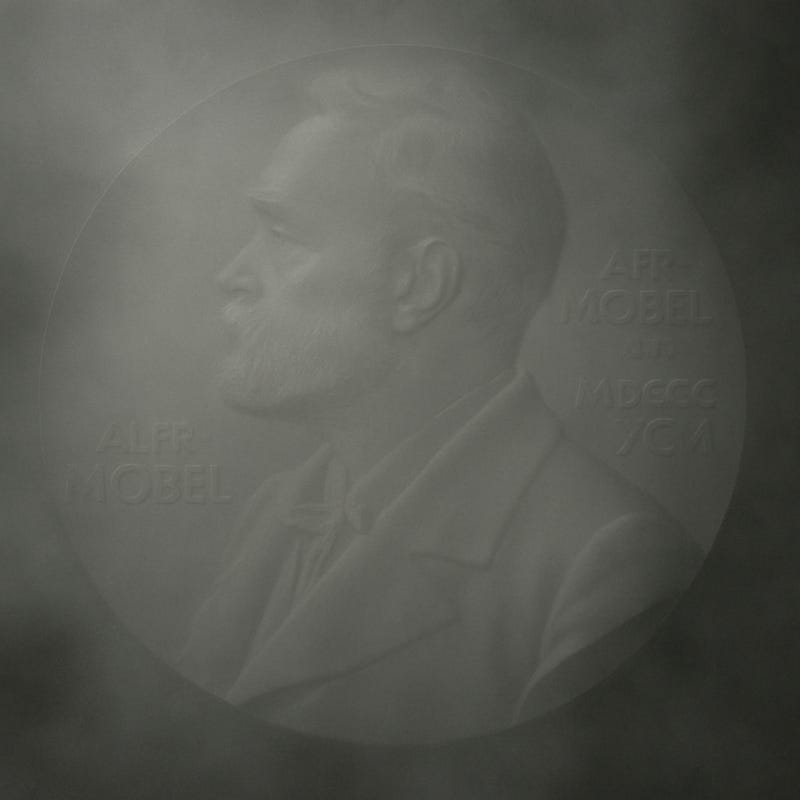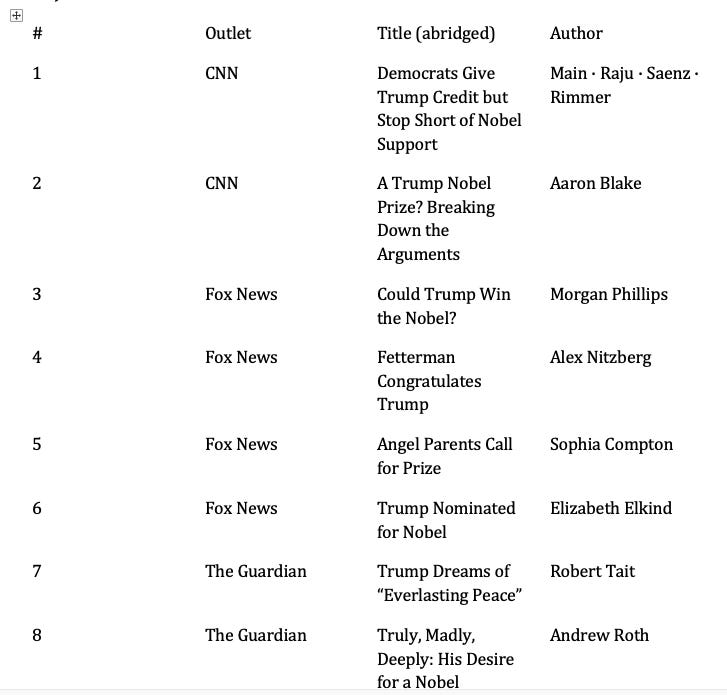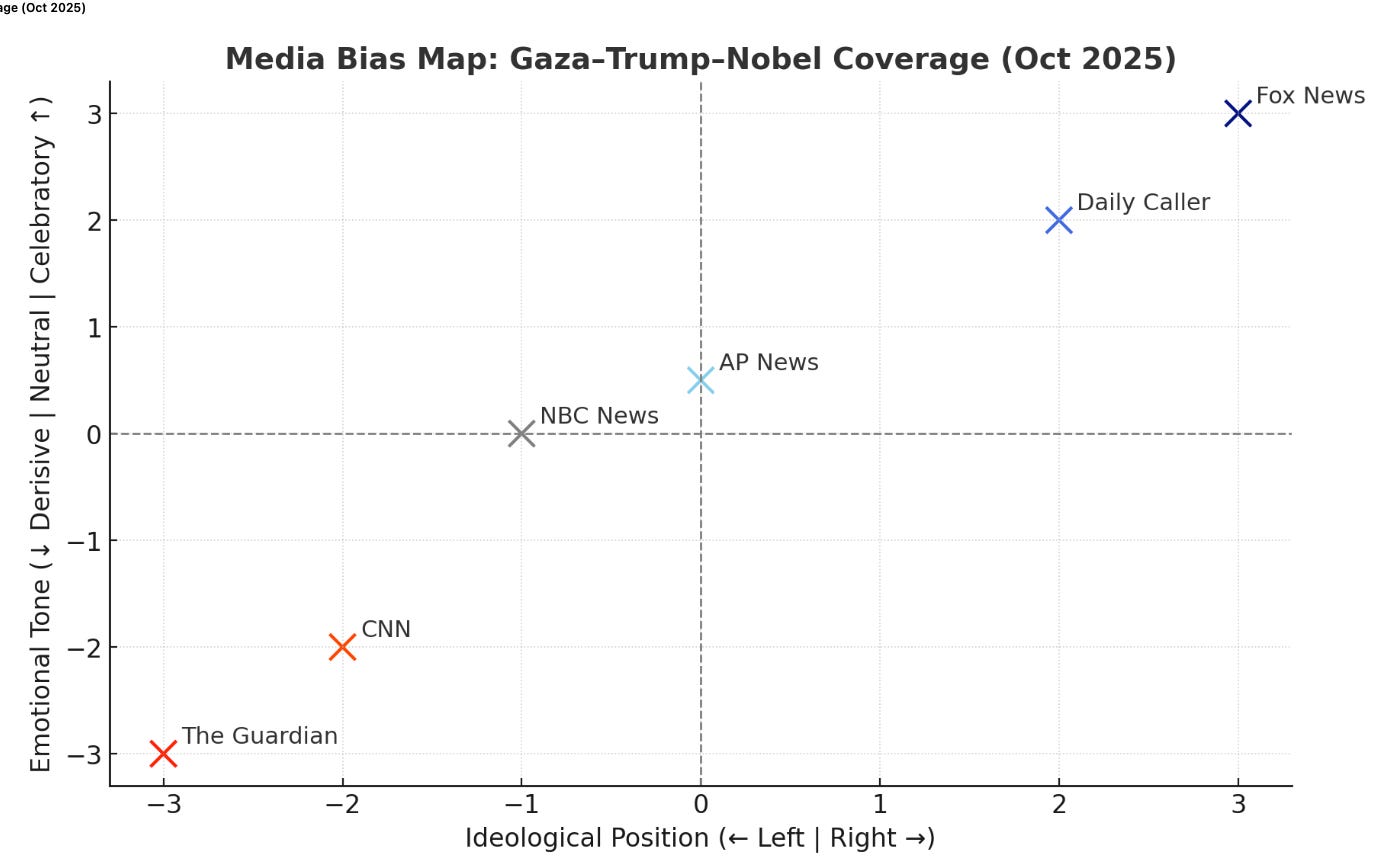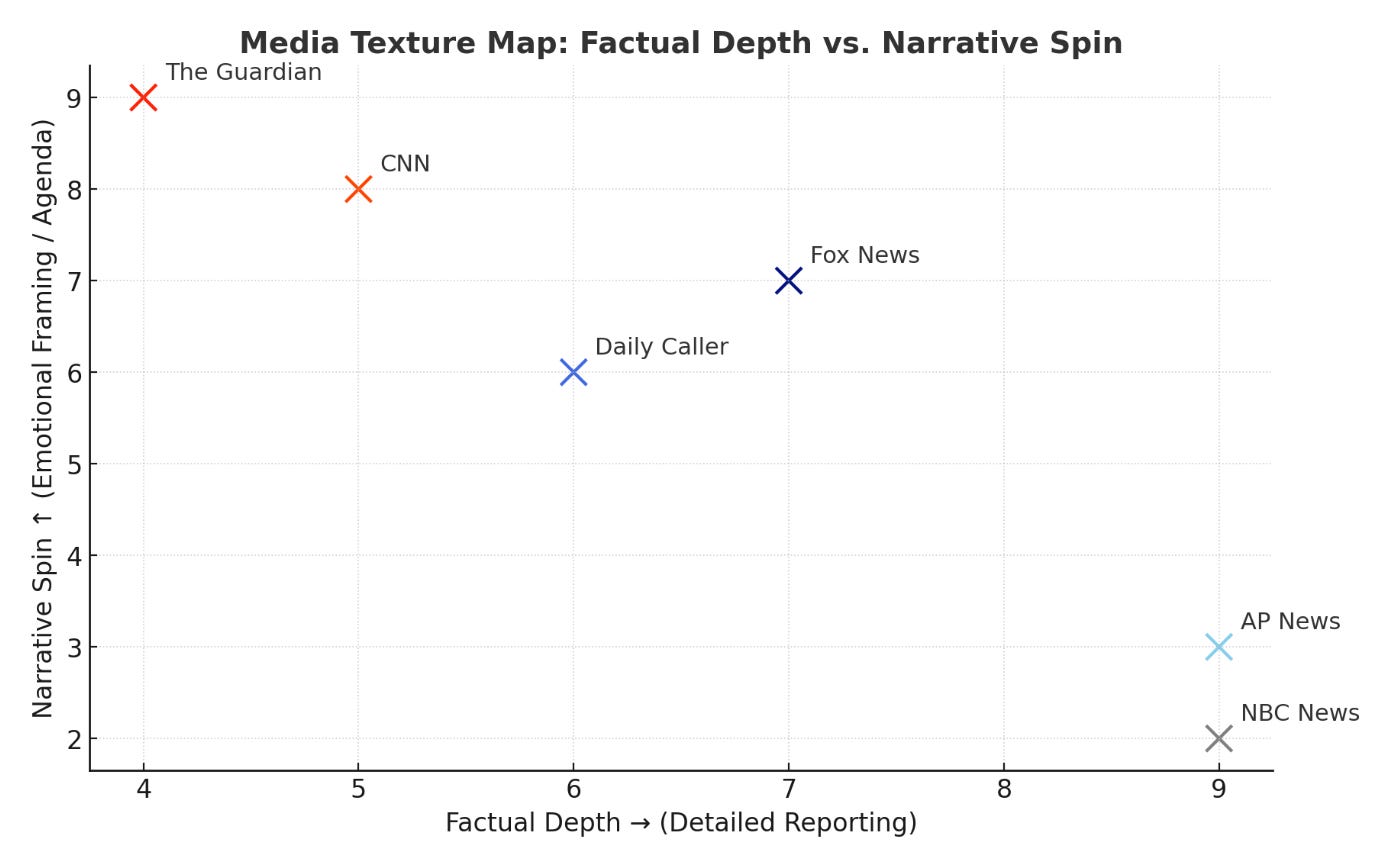The Gaza–Trump–Nobel Divide: How the Media Told Two Different Histories
When peace fails to fit the narrative, the easiest edit is omission.
The Gaza–Trump–Nobel Divide: How the Media Told Two Different Histories
By. Jim Reynolds | www.reynolds.com
Introduction: A Peace No One Could See Coming
In early October 2025, Donald Trump brokered what many believed impossible — a ceasefire between Israel and Hamas that ended a two-year Gaza war and freed scores of hostages. It was the first durable peace accord in the region in nearly a generation, achieved without new wars, occupations, or sanctions. World leaders reacted with surprise, admiration, or quiet disbelief. Yet in American media, the story fractured immediately along ideological fault lines.
Some outlets celebrated the breakthrough as historic diplomacy. Others treated it as self-promotion. And a few major networks — ABC, CBS, and MSNBC — scarcely covered it at all. That silence was itself instructive: when peace fails to fit the narrative, the easiest edit is omission.
The following analysis of seventeen news articles across six outlets captures that divide — not just what they said, but what they couldn’t bring themselves to say.
I. The Coverage Landscape
II. The Articles Themselves
A snapshot of each source and headline tells the story better than adjectives ever could:
III. Tone and Texture
Left Bloc (Guardian, CNN): Used irony, conditional verbs, and personality focus. “Everlasting peace” became “ego fulfillment.” Every positive development was offset with an ethical caution or digression into Trump’s character.
Right Bloc (Fox, Daily Caller): Used moral vindication language — “finally,” “historic,” “redemption.” Trump’s persistence was framed as proof of realism over ideology.
Center Bloc (AP, NBC): Used official tone and procedural phrasing — “approved,” “announced,” “with help from allies.” Accuracy without affect.
Non-Coverage: ABC, CBS, MSNBC’s minimal mention suggests avoidance through omission — an old media reflex when facts threaten an established emotional frame.
IV. The Visual Pattern
1. Bias Map – Ideology vs. Tone: Guardian and CNN anchored the derisive left. AP and NBC hovered neutrally. Daily Caller and Fox celebrated from the right.
2. Texture Map – Factual Depth vs. Narrative Spin: Guardian and CNN shallow facts, heavy spin. AP and NBC deep facts, minimal spin. Fox and Caller moderate facts, persuasive framing.
Together, these maps reveal not polarization but parallel realities: each outlet reported a different version of the same world.
V. The Meta-Pattern
1. Tone Substitution – when peace broke out, adjectives replaced facts.
2. Silence as Spin – omission proved as telling as attack.
3. Framing Reflex – for both sides, Trump’s personality became the story.
4. Institutional Habit – the press’s emotional bias now functions as muscle memory.
VI. Bob’s Verdict
“Peace finally breaks out — half the press calls it a rumor, the other half calls it Trump’s fault. Apparently, the only thing America can’t fight about is fighting.”
Conclusion
The Gaza ceasefire of 2025 was not only a geopolitical milestone but also a mirror held to the media. It showed that even peace can’t escape polarization. When Trump secured what experts said was impossible, journalism itself split into two species — one describing what happened, and another describing why it shouldn’t have. In that divide lies the most revealing headline of all: Truth is no longer what’s seen — it’s who’s telling it.








